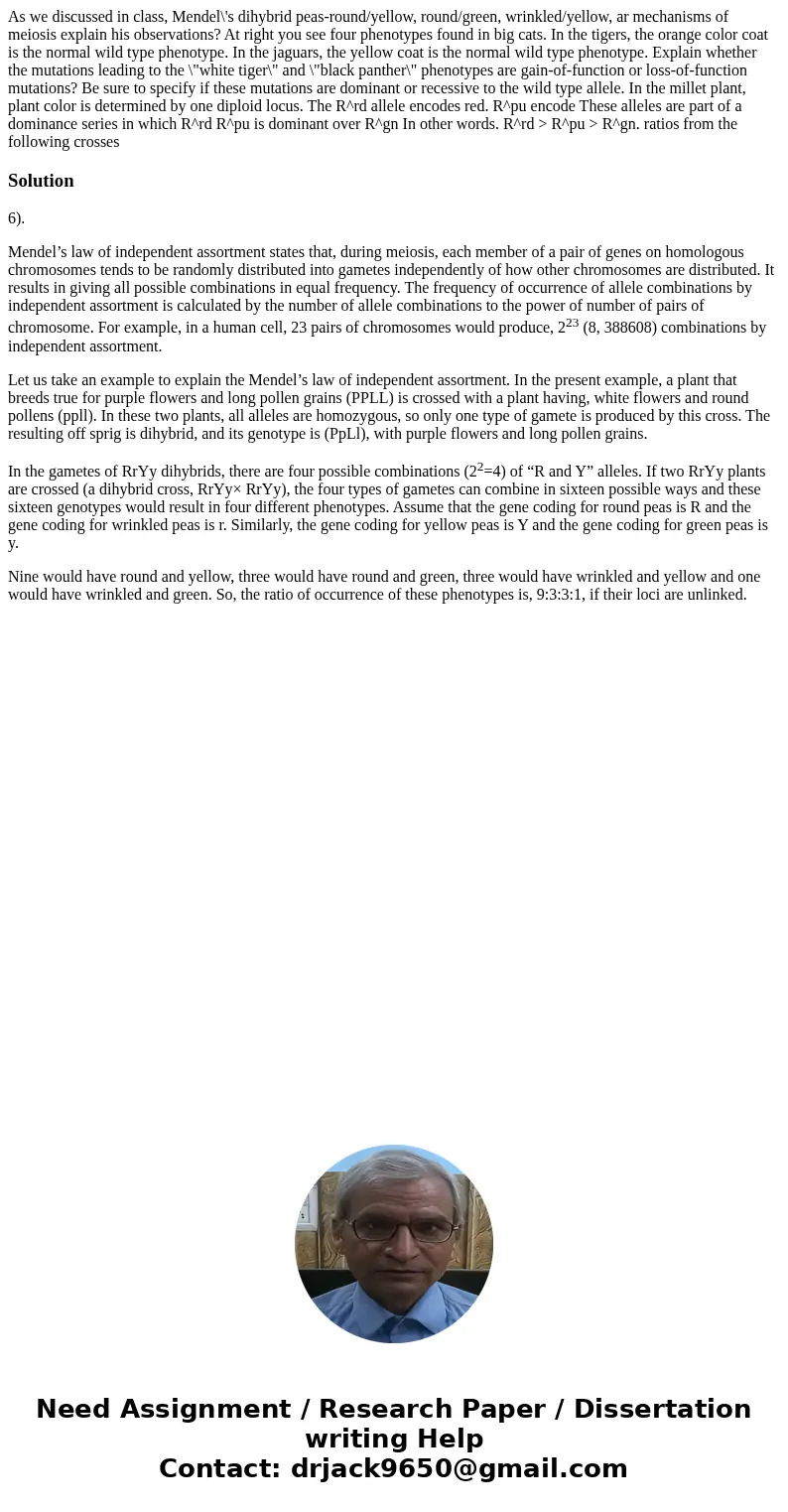As we discussed in class Mendels dihybrid peasroundyellow ro
Solution
6).
Mendel’s law of independent assortment states that, during meiosis, each member of a pair of genes on homologous chromosomes tends to be randomly distributed into gametes independently of how other chromosomes are distributed. It results in giving all possible combinations in equal frequency. The frequency of occurrence of allele combinations by independent assortment is calculated by the number of allele combinations to the power of number of pairs of chromosome. For example, in a human cell, 23 pairs of chromosomes would produce, 223 (8, 388608) combinations by independent assortment.
Let us take an example to explain the Mendel’s law of independent assortment. In the present example, a plant that breeds true for purple flowers and long pollen grains (PPLL) is crossed with a plant having, white flowers and round pollens (ppll). In these two plants, all alleles are homozygous, so only one type of gamete is produced by this cross. The resulting off sprig is dihybrid, and its genotype is (PpLl), with purple flowers and long pollen grains.
In the gametes of RrYy dihybrids, there are four possible combinations (22=4) of “R and Y” alleles. If two RrYy plants are crossed (a dihybrid cross, RrYy× RrYy), the four types of gametes can combine in sixteen possible ways and these sixteen genotypes would result in four different phenotypes. Assume that the gene coding for round peas is R and the gene coding for wrinkled peas is r. Similarly, the gene coding for yellow peas is Y and the gene coding for green peas is y.
Nine would have round and yellow, three would have round and green, three would have wrinkled and yellow and one would have wrinkled and green. So, the ratio of occurrence of these phenotypes is, 9:3:3:1, if their loci are unlinked.

 Homework Sourse
Homework Sourse